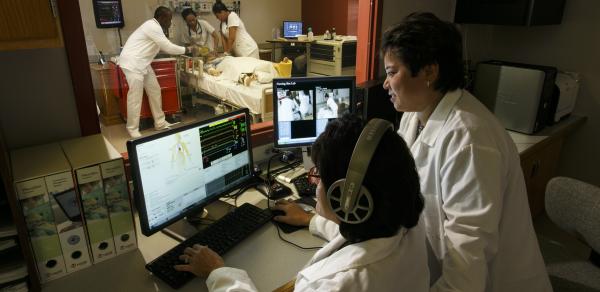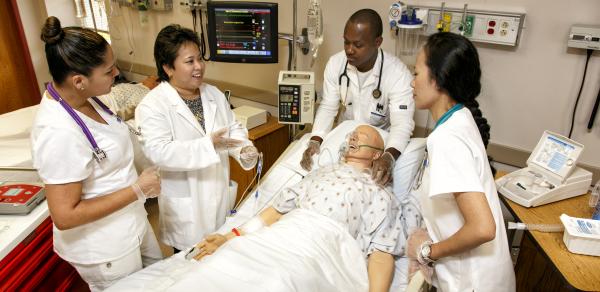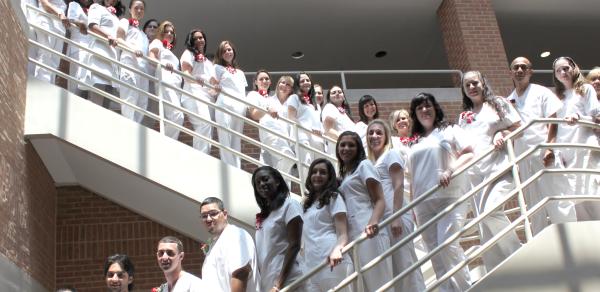Distance Learning (Online Learning)
Distance education is defined as a planned teaching-learning process that uses one or more technologies as a conduit for learning when students are separated from the instructor, requiring regular, substantive and supportive instructor-student and student-student interactions. Interactions may be in real-time (synchronous) or delayed (asynchronous). The technologies may include but are not limited to the Internet; one-way and two-way transmissions through open broadcast, closed circuit, cable, microwave, broadband lines, fiber optics, satellite, or wireless communications devices; audio conferencing; or DVDs, and CD-ROMs, if they are used in conjunction with any of the prior technologies.
Definitions
Distance education is defined as a planned teaching-learning process that uses one or more technologies as a conduit for learning when students are separated from the instructor, requiring regular, substantive and supportive instructor-student and student-student interactions. Interactions may be in real-time (synchronous) or delayed (asynchronous). The technologies may include but are not limited to the Internet; one-way and two-way transmissions through open broadcast, closed circuit, cable, microwave, broadband lines, fiber optics, satellite, or wireless communications devices; audio conferencing; or DVDs, and CD-ROMs, if they are used in conjunction with any of the prior technologies.
- In-Person - In an In-Person class, all required class meetings occur on campus, during scheduled class meeting times. Contact includes instruction, learning activities, and interactions (both student-student and student-instructor). An In-Person class where material is provided online, via a learning management system or website, does not displace any of the required contact hours that would normally occur in a scheduled In-Person class. Assignment deadlines and exams days/times are maintained and included in the class syllabus. Check In-Person class meeting days/times in the schedule of classes.
- Hybrid - In a Hybrid class, online contact hours (synchronous* or asynchronous**) displaces some portion of the required contact hours that would normally take place in a scheduled in-person (face-to-face) class. Contact includes instruction, learning activities, and interactions (both student-student and student-instructor). A hybrid class is designed to integrate face-to-face and online activities so that they reinforce, complement, and elaborate one another, instead of treating the online component as an add-on or duplicate of what is taught in the classroom. Assignment deadlines and exams days/times are maintained and included in the class syllabus. Check for In-person and synchronous online class meeting days/times in the schedule of classes for students.
- Online - In an Online class (synchronous* or asynchronous**), all required contact hours are online. Contact includes instruction, learning activities, and interactions (both student-student and/or student-instructor). All the classwork, examinations, quizzes, writing assignments, lab work, etc. are fully online. Check for Synchronous class meeting days/times in the schedule of classes for students.
*Synchronous: Synchronous class meetings resemble traditional on-campus In-Person classes in that students must be (virtually) present at the same time. Though they are conducted virtually, synchronous classes meet in real-time. Students must commit to scheduled class times and sign onto their virtual learning platform on schedule.
**Asynchronous: Asynchronous class meetings do not require students to log in to their virtual classroom at a specified time.
About Online Learning - FAQs
- How do I know if I am ready to learn online?
Online learners take an active role in their learning. Motivation, self-direction, and good time management skills are important characteristics for the online learner. In addition, computer and internet access is required. Please take the online readiness quiz to measure how prepared you are for online learning. - What equipment do I need to take an online course? Computer and internet access several days during the week is required. A CUNY email account is required and provided by the college. Brightspace, the web-based learning classroom, has minimal hardware requirements for your computer. It is strongly recommended that students utilize the Brightspace site and course-associated resources and assignments using a lap-top or large computer screen with capability to hear and view video clips and narrated PowerPoint.
For more information, go to www.csi.cuny.edu/faculty-staff/center-teaching-learning-and-professional-development/brightspace#training-and-resources-students - What minimum computer skills are required to take an online class?
The learner must be able to:- Navigate the internet with a web browser that supports Brightspace
- Use CUNY email and send attachments
- Download and install plug-ins
- Use a word processing program – Microsoft Word is recommended
-
How are in-person, web-enhanced, hybrid, and online courses different?
- In an In-Person class, all required class meetings occur on campus, during scheduled class meeting times.
- In a Hybrid class, online contact hours (synchronous* or asynchronous**) displaces some portion of the required contact hours that would normally take place in a scheduled in-person (face-to-face) class. Check for In-person and synchronous online class meeting days/times in the schedule of classes for students.
- In an Online class (synchronous* or asynchronous**), all required contact hours are online. All the classwork, examinations, quizzes, writing assignments, lab work, etc. are fully online. Check for Synchronous class meeting days/times in the schedule of classes for students.
*Synchronous: Synchronous class meetings resemble traditional on-campus In-Person classes in that students must be (virtually) present at the same time. Though they are conducted virtually, synchronous classes meet in real-time. Students must commit to scheduled class times and sign onto their virtual learning platform on schedule.
**Asynchronous: Asynchronous class meetings do not require students to log in to their virtual classroom at a specified time. - Do online courses require any on-campus meetings?
In an Online class, all required contact hours are online. All the classwork, examinations, quizzes, writing assignments, lab work, etc. are fully online.
In a Hybrid class, online contact hours displaces some portion of the required contact hours that would normally take place in a scheduled in-person (face-to-face) class. Check for In-person and synchronous online class meeting days/times in the schedule of classes for students. Students should check any special notations provided for the course on CUNYFirst and via www.csi.cuny.edu/students/academic-advisement/faqs - What does the online learning classroom look like? How do I access my online learning course?
Brightspace is the centralized web-based learning classroom utilized for all online courses. It is here where you would access all important course documents, communicate with faculty and classmates, engage in discussions, and submit assignments.
You can access Brightspace via CUNY First and log-in: www.cuny.edu or brightspace.cuny.edu
Students who need assistance with technology or Brightspace are encouraged to explore www.csi.cuny.edu/studenthelpdesk
If you have any questions, e-mail your questions to- Brightspace Support for Students (helpdesk@csi.cuny.edu)
- After Hours Toll-free support line for all Brightspace users: 1-888-895-2511
- What can I expect from my online course?
Just like traditional, in-person courses, online courses use a variety of teaching-learning strategies. The specific course objectives, expectations, and assignments will be outlined in the course syllabus. - How flexible is the course schedule?
Online courses follow the College of Staten Island’s academic calendar, /academics-and-research/academic-calendars-and-final-examination-schedule. Many of the courses are structured for asynchronous learning over a 15 week span. Students are expected to log on to Brightspace and check the course postings, information, and e-mail on the first day of class (as per academic calendar). All course assignments and activities must be completed by specified due dates, noted in the course syllabus and/or course calendar schedule. Many courses require discussions postings, dialogue, and/or assignments on more than one day during the week. - What is the time commitment expected for online courses?
Typically, the formula for calculating time needed for a 3 credit course is: 3 hours for every credit hour. That means for a 3 credit course, it's estimated that an average student should be spending about 9 hours per week in the class and assignments. Scheduling uninterrupted time several times during the week to complete course-related work and assignments is strongly recommended. Students are expected to log on to Brightspace and check the course postings, information, and e-mail on the first day of class (as per academic calendar). - Where do I call for information regarding online nursing courses?
Please contact a nursing advisor at 718-982-3810 - What Technical resources are available to students?
- Student Technology Help Desk
Phone Number: 718.982.3695
Email Address: helpdesk@csi.cuny.edu
Helpdesk Website: www.csi.cuny.edu/studenthelpdesk - Brightspace Help:
*Email: helpdesk@csi.cuny.edu
Website: Help and Support | Office of Information Technology Services | CSI CUNY Website
*Please be sure to use your CUNY student email for all correspondence and include your name, course name, course section number, and a brief description of the issue.
- Student Technology Help Desk
- What additional resources are available to students?
There are several resources available to students to ensure successful online learning.- College of Staten Island Library. Please visit the website for hours, services, and resources: www.library.csi.cuny.edu
-
Technology Literacy Workshops:
Please visit the link below for specific workshop information:
Student Training | Technology Training | CSI CUNY Website





